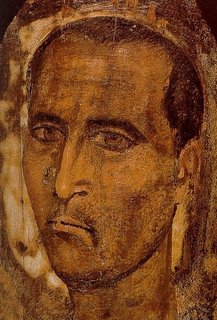KSRK: Guilty?/Not Guilty? (April 5, Midnight. “A Possibility”)
"Langebro has its name from its legnth; that is, as a bridge it is long but is not much as a roadway, as one easily finds out by passing over it. Then when one is standing on the other side in Christianshavn, it in turn seems that the bridge must nevertheless be long as a roadway, because one is far, very far away from Copenhagen."


1 Comments:
"One of the most interesting parts of Garff's book is his examination of a story inserted in the ''Guilty?''/''Not Guilty?'' section of Kierkegaard's The Stages on Life's Way. In this story, entitled ''A Possibility'' (276-288), a young man who had visited a brothel is described as becoming obsessed with the fear that he might have fathered an illegitimate child.
''The fear about the consequences of the visit,'' writes Garff, was not, as it was presented in The Stages, ''a fear about possible offspring—that is a poetic diversionary tactic. It was rather a fear about having contracted a contagious disease'' (344). This theory, Garff asserts, is supported by an earlier story entitled ''A Leper's Self-Contemplation'' (233-234), that was also inserted in one of the passages of The Stages, where a leper is described as securing a salve that would conceal the outward signs of his illness.
''A demonic and alarming allegory,'' asserts Garff,
takes form deep within this dark tale, a reconstruction of a crippling relationship to one's father: .... The father is a leper, and leprosy is a metaphor for syphilis. And the salve he uses to combat the infection is not a poetic invention but existed in the real world as mercury salve, known as ‘the gray ointment,' which physicians believed to be effective in treating syphilis. The curative effects of the mercury salve treatment were only visible after fifteen or twenty years, however... (346.)
Kierkegaard's father, Garff observes, citing a little-known entry in one of Kierkegaard's journals, actually told his son ''that in his youth he had been like a wild animal and had contracted an infectious disease, a syphilitic punishment'' (347.)
The ''syphilis theory'' is fascinating and ingenious, combining in an enormously fruitful way impressive knowledge of nineteenth-century medicine with an almost unprecedented familiarity with the more obscure passages from Kierkegaard's journals and papers. ''Almost'' is the operative word here because, according to Tudvad, the ''syphilis theory,'' in all its details, is not actually Garff's, but comes from Carl Saggau's Skyldig-ikke skyldig? Et par kapitler af Michael og Søren Kierkegaards Ungdomsliv (Guilty-Not Guilty? A Couple Chapters from Michael and Søren Kierkegaard's Youth) (Copenhagen, 1958)."
Post a Comment
<< Home